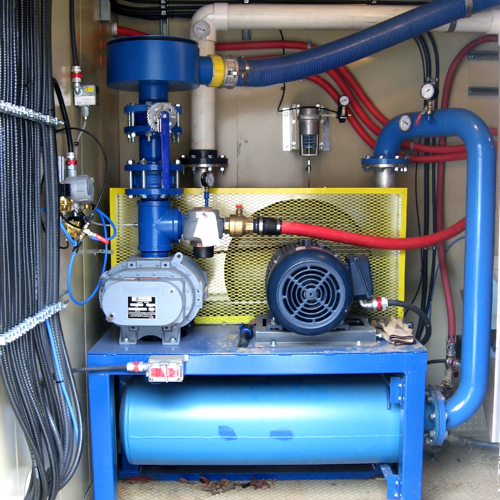Groundwater Treatment Systems
Cost-effective pump-and-treat systems!
Most groundwater treatment approaches, or “pump and treat” systems, aim to provide capture of the compounds of concern as well as reducing the mass of the compounds of concern within the subsurface. Treatment of the compounds of concern can combine several biological, chemical, or physical treatment technologies. The remediated groundwater is discharged and the contaminant either mitigated or collected for disposal off-site. The treatment approach is generally modified as contaminant concentrations decrease.
IRSL has extensive experience in a variety of groundwater treatment systems. For our Province of Ontario clients, we hold several mobile Certificates of Approval that empower us to be on-site within two-to-three weeks.

Treatment Trains
Treatment trains may include any of the following:
Activated Carbon
Composed of black granules of bituminous coal, wood, nutshells or other carbon-rich materials, Granular Activated Carbon (GAC) can treat a wide range of contaminants dissolved in groundwater, such as fuel oil, solvents, polychlorinated biphenyls (PCBs), dioxins, and other industrial chemicals, as well as radon and other radioactive materials. As contaminated water or air flows through the activated carbon, the contaminants are chemically bound, or sorbed, to the surface of the carbon, removing them from the water or air. Various types and grades of GAC exist, including virgin and regenerated. IRSL aids our clients in determining which carbon type and carbon material is best for their application.
Permanganate Impregnated Activated Carbon
Activated carbon’s adsorptive capacity can be greatly enhanced through impregnation with permanganate or other options. This option is especially useful in addressing vinyl chloride.
Air Stripping
Used to remove “Volatile Organic Compounds” (VOCs), air stripping forces air through extracted contaminated groundwater, “stripping” the VOCs. The air is then collected and treated using GAC, catalytic oxidation or biofilters, depending on concentrations.
Oil/Water Separators
O/W Separators contain coalescing media that facilitates the collection and removal of small oil droplets, and also facilitates the effective removal of fine suspended solids, from the extracted groundwater.
Sand, Particulate and Green Filters
Extracted groundwater is filtered through various sand, particulate or “green” filters to remove fine particles that can plug down gradient filters and media as well as removing some contaminants such as iron and lead. IRSL provides technical advice to our clients on which filters are most effective for their application. Various types of filters can be utilized, including: Canister, Sand, Bag, Organoclay, and Chemical Filters such as Greensand.
Important Considerations
1. Effective groundwater treatment systems require a comprehensive understanding of the constraints of the site hydrogeology and geochemistry. For example, the presence of dissolved iron in the groundwater can cause significant issues for filters in the treatment train as well as affecting the pH of the effluent due to oxidation reactions.
2. Systems that aim to contain impacted groundwater require careful monitoring and optimization to ensure containment. Often, the area of influence is used to determine if the system is containing impacted groundwater, which can lead to incorrect analysis; instead, capture zone analysis should be completed to ensure capture.
3. Pump and treat systems also require careful evaluation to ensure that operation of the systems is optimized but not running beyond its limitations. Most pump and treat systems are not effective at completing total site remediation, yet they can be effective at containing and removing contaminant mass.


Ready to get started?
Speak with our engineering team about how our environmental remediation services can help you in your remediation journey and take the next steps to building a better environment and a cleaner community with your project.
I'm ready to Start